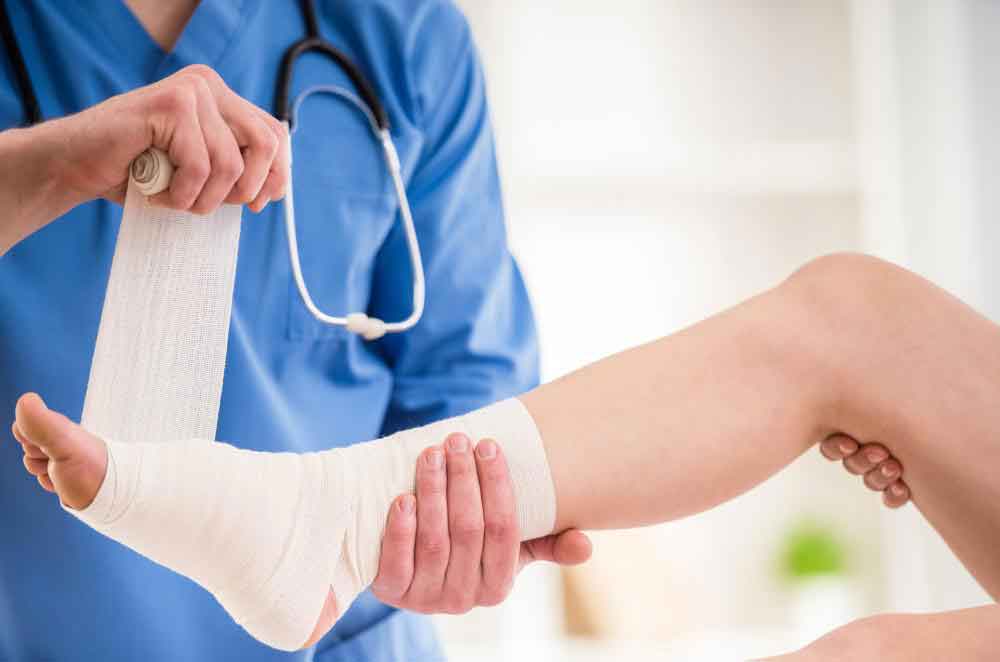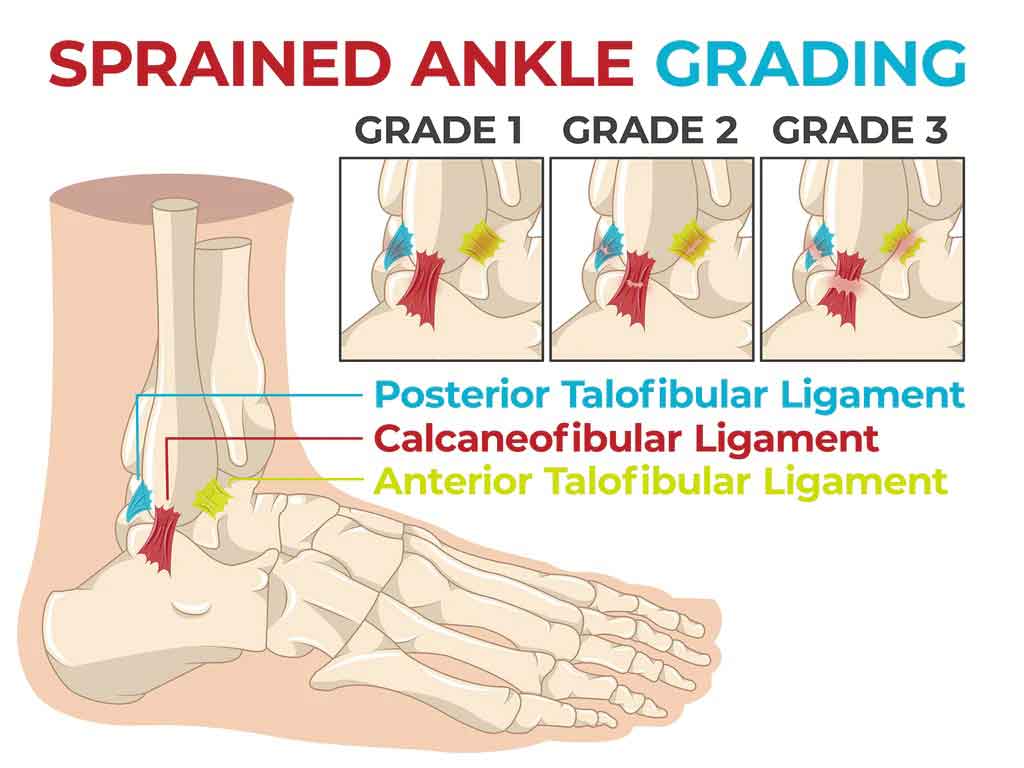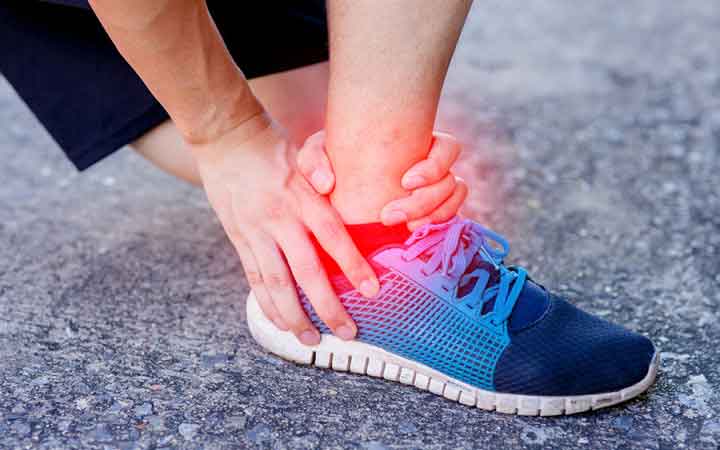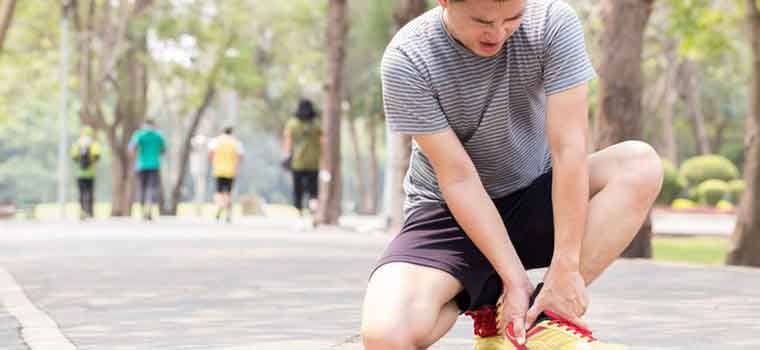WHAT ARE SPRAINS?
A sprain is a stretching or tearing of ligaments — the tough bands of fibrous tissue that join two bones together in your joints. The most frequent location for a sprain is in your ankle.
Initial treatment involves rest, ice, compression, and elevation. Mild sprains could be successfully treated at home. Severe sprains sometimes need surgery to repair torn ligaments.
The difference between a sprain and a strain is that a sprain injures the bands of tissue that join two bones together, while a strain includes an injury to a muscle or to the band of tissue that conjoins a muscle to a bone.
SPRAINS SYMPTOMS
Signs and symptoms will vary, depending on the severity of the injury, and might include :
- Pain
- Swelling
- Bruising
- Limited ability to move the affected joint
- Hearing or feeling a “pop” in your joint at the moment of injury
WHEN SHOULD YOU SEE THE DOCTOR?
Mild sprains could be treated at home. But the injuries that cause sprains could also cause severe injuries, such as fractures. You must consult a medical practitioner if you :
- Cannot move or bear weight on the damaged joint
- Have pain directly over the bones of a damaged joint
- Have numbness in any part of the injured region
SPRAINS CAUSES :-
A sprain happens when you overextend or tear a ligament while severely stressing a joint. Sprains usually occur in the following circumstances :
- Ankle — Walking or exercising on uneven ground, landing awkwardly from a jump
- Knee — Pivoting during an athletic activity
- Wrist — Landing on an outstretched hand while falling
- Thumb — Skiing injury or overextension when playing racquet sports, like tennis
Children have areas of softer tissue, known as growth plates, near the ends of their bones. The ligaments around a joint are usually stronger than these growth plates, so children are more likely to experience a fracture than a sprain.
SPRAINS RISK FACTORS :-
Factors contributing to sprains include :
- Environmental conditions – Slippery or uneven surfaces could make you more prone to injury.
- Fatigue – Tired muscles are less likely to offer good support for your joints. When you are tired, you are also more likely to succumb to forces that can stress a joint.
- Poor equipment – Ill-fitting or poorly maintained footwear or other sporting equipment could contribute to your risk of a sprain.
SPRAINS PREVENTION :-
Regular stretching and strengthening exercises for your sport, fitness, or work activity, as part of an overall physical conditioning program, could help to minimize your risk of sprains. Try to be in shape to play your sport; do not play your sport to get in shape. If you have a physically demanding occupation, regular conditioning could help prevent injuries.
You could protect your joints in the long term by working to strengthen and condition the muscles around the joint that has been injured. The best brace you could give yourself is your own “muscle brace.” Ask your doctor about the right conditioning and stability exercises. In addition to this, use footwear that offers support and protection.
SPRAINS DIAGNOSIS
During the physical examination, your doctor will check for swelling and points of tenderness in your affected limb. The location and intensity of your pain could help determine the extent and nature of the damage.
X-rays could help rule out a fracture or other bone injury as the source of the problem. Magnetic resonance imaging (MRI) also might be used to help diagnose the extent of the injury.
SPRAINS TREATMENT
For immediate self-care of a sprain, use the R.I.C.E. approach — rest, ice, compression, elevation :
Rest – Stay away from activities that cause pain, swelling, and discomfort. But do not avoid all physical activity.
Ice – Even if you are seeking medical help, ice the area promptly. Use an ice pack or slush bath of ice and water for fifteen to twenty minutes each time and repeat every two to three hours while you are awake for the first couple of days following the injury.
Compression – To help stop swelling, compress the area with an elastic bandage till the swelling stops. Do not wrap it too tightly or you might impede circulation. Start wrapping at the end farthest away from your heart. Loosen the wrap if the pain increases, the area becomes numb or swelling is happening below the wrapped area.
Elevation – Elevate the injured area above the level of your heart, particularly at night, which allows gravity to help reduce swelling.
Over-the-counter pain medications such as ibuprofen (Advil, Motrin IB, others) and acetaminophen (Tylenol, others) also could be helpful.
After the first two days, gently start to use the injured area. You should see a slow, progressive improvement in the joint’s ability to support your weight or your ability to move without pain. Recovery from sprains could take days to months.
A physical therapist could help you to maximize the stability and strength of the injured joint or limb. Your doctor might suggest that you immobilize the area with a brace or splint. For some injuries, such as a torn ligament, surgery might be considered.
If you or anyone you know is suffering from sprains, our expert providers at Specialty Care Clinics will take care of your health and help you recover.
Call 469-545-9983 to book a telehealth appointment for an at-home check-up.




